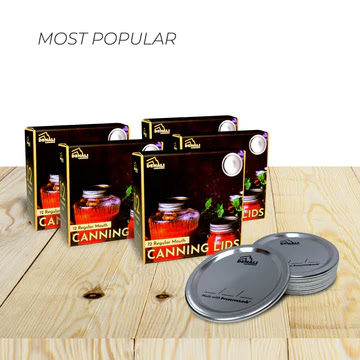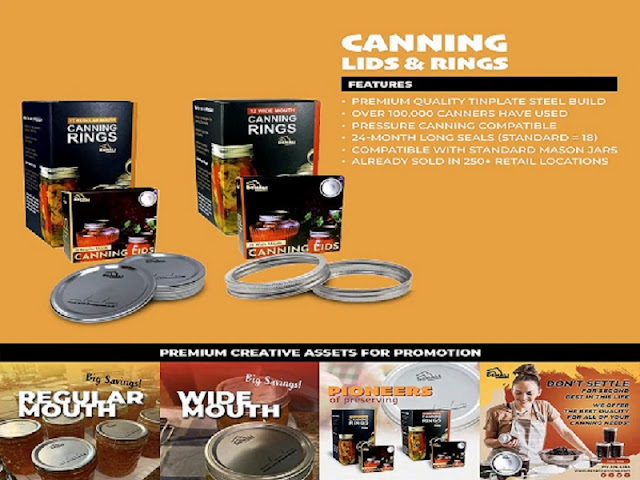Explore How Does Canning Lids Keep Canned Food Fresh
Canning is a time-honored method of food preservation that relies on the science behind sealing to keep our favorite fruits, vegetables, and jams safe and flavorful for extended periods.
Canning lids play a crucial role in this process. They work magic to create an airtight seal that locks in freshness and prevents spoilage. In this blog, we'll take an educational deep dive into the science behind canning lids, uncovering the principles that make them essential to successful food preservation.
Understanding the Canning Process
Before delving into the intricacies of regular canning lids, it's essential to grasp the overall canning process. Canning involves placing prepared food into glass jars and sealing them tightly to create a vacuum seal.
This prevents the growth of harmful microorganisms like bacteria and molds that lead to food spoilage. The combination of proper preparation, sealing, and processing ensures that the canned foods remain safe for consumption.
The Role of Canning Lids
Canning lids are designed to form an airtight seal that prevents air entry and contaminants into the jar. This seal is created through a combination of elements, including the lid material, the sealing compound, and the vacuum created during processing.
1. Lid Material: Most bulk canning lids are made of two layers—a metal lid with a sealing compound. The metal lid provides structural integrity and acts as a barrier. At the same time, the sealing compound is typically made of a rubber-like material that softens and adheres to the jar rim during processing.
2. Heat and Pressure: The sealing process begins with applying heat. During processing, the food inside the jar heats up, causing the air to expand and escape from the jar. As the jar cools after processing, a vacuum is created, pulling the center of the lid downward. This creates a concave shape, indicating a successful seal.
3. Sealing Compound: The sealing compound on the underside of the lid plays a vital role in creating an airtight seal. The sealing compound softens and adheres to the jar rim as the jar cools. This bond prevents air and microorganisms from entering the jar, ensuring the preserved food's safety and longevity.
4. Pop-up Button Indicator: Some canning lids have a pop-up button indicator. This button pops up and makes a distinctive "pop" sound as a visual and auditory confirmation that a proper seal has been achieved.
The Importance of Proper Sealing
Proper sealing is critical to the success of the canning process. A secure seal prevents air from entering the jar, inhibiting the growth of bacteria, yeast, and molds that lead to food spoilage. It also helps maintain the preserved food's flavor, texture, and nutritional value over time.
Conclusion: The science behind canning lids is a harmonious blend of materials, heat, pressure, and sealing compounds. Through careful preparation, processing, and the magic of science, canning lids create an airtight barrier that preserves our favorite foods for months and even years. The next time you open a jar of homemade goodness, remember the intricate science that went into ensuring its freshness and safety.



.jpg)


Comments
Post a Comment